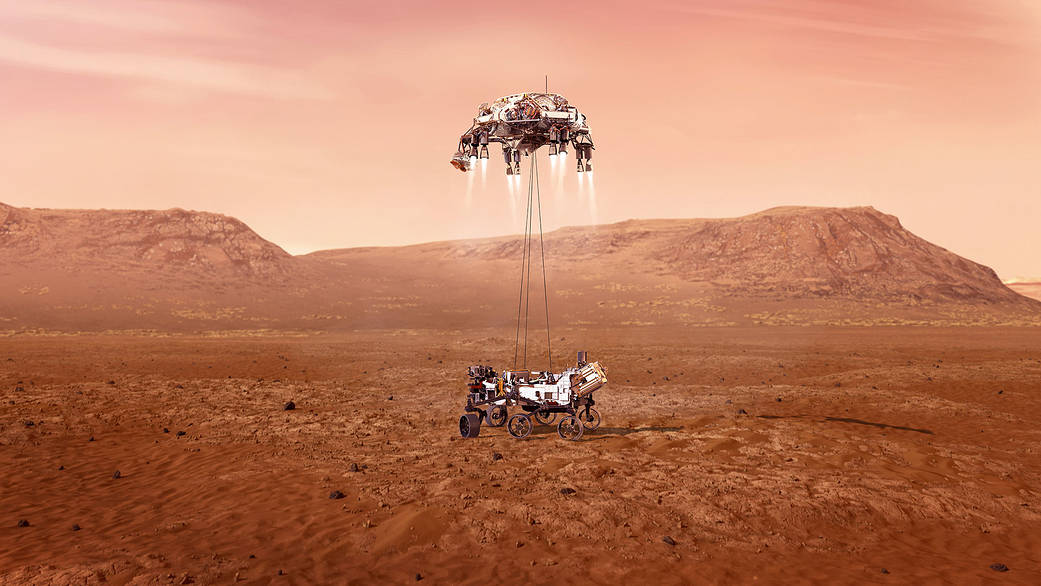
For SpaceUpClose.com & RocketSTEM
CAPE CANAVERAL, FL – NASA’s Mars Perseverance rover is ready for touchdown now as the most powerful and sophisticated robot ever dispatched from Earth and at the most daring, difficult and scientifically rewarding landing site ever attempted by the agency on the surface of the Red Planet at Jezero crater – that simultaneously begins the first leg of a truly ground breaking astrobiology mission in search of ancient life now just a day away on Thursday afternoon, Feb. 18.
Today, Wednesday, Feb 17, NASA’s one ton Perseverance rover along with the Ingenuity Mars Helicopter attached to its belly, is barreling towards the Red Planet and increasing speed on approach to plunge into the Martian atmosphere at 12,000 MPH (19,500 kph) and begin the harrowing ‘7 Minutes of Terror’ on a do or die mission hopefully ending in a soft touchdown at around 3:55 p.m. EST (12:55 p.m. PST) Feb. 18.
Perseverance counts as the 3rd of 3 spaceships from Earth concluding the Martian Invasion Fleet following the successful orbital arrivals of the China Tainwen-1 probe and UAE Hope Orbiter last week on Feb 9 & 10.
After experiencing terrifying temperatures of some 2,370 degrees Fahrenheit (about 1,300 degrees Celsius) during the nail biting plunge and deploying supersonic parachutes while descending at >1000 MPH, in the final moments the Perseverance rover will employ the ‘sky crane maneuver’ just like Curiosity in 2012 and be gently lowered on nylon tether cables like from a helicopter at just 2 MPH for the soft touchdown on the floor of Jezero Crater.
The Entry, Descent and Landing (EDL) sequence is entirely automated with no possibility for human intervention because the lag 11 minutes in time for the radio signals to reach Earth – after the one-way radio delay across the vast interplanetary gulf of some 119 million miles (191 million kilometers) – the time it takes for signals to reach Earth from Mars traveling at the speed of light.
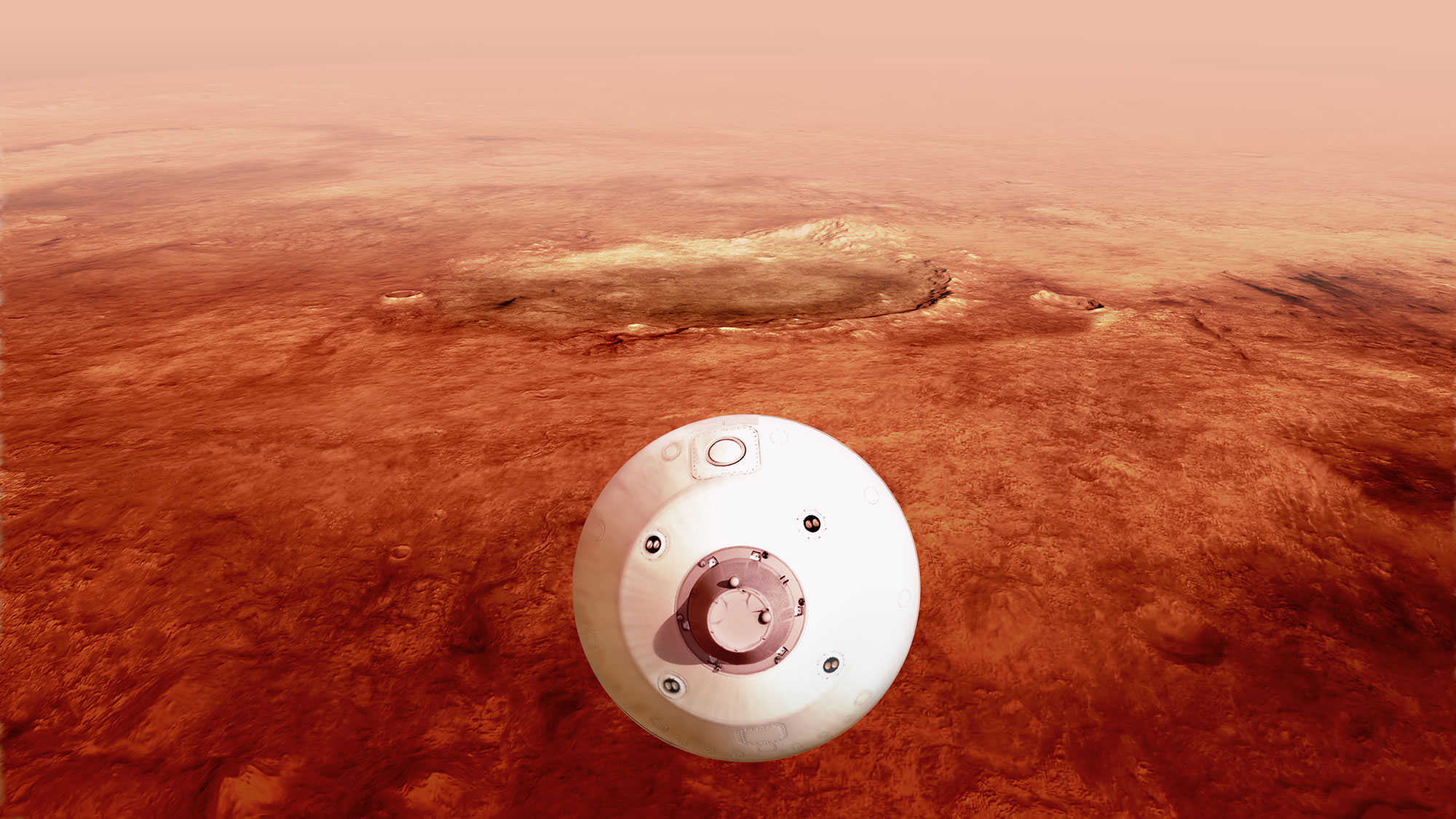
In fact because of the radio signal delay the entire risky descent and landing event will be over and done – success or fail – before we even receive the first signals of the ‘Terror’ unfolding.
“The rover is healthy and the “GO EDL” command was uploaded Friday” in a major milestone, said Jennifer Trosper, deputy project manager for the mission at JPL, at a media briefing today.
“The Perseverance team is putting the final touches on the complex choreography required to land in Jezero Crater. No Mars landing is guaranteed, but we have been preparing a decade to put this rover’s wheels down on the surface of Mars and get to work.”

The $2.7 Billion Perseverance rover is currently about 1,260,000 miles (2,035,000 kilometers) from Mars and on track to land on the Red Planet after an interplanetary journey of over 291 million miles (468 million kilometers), said the mission team at a media briefing today.
Perseverance will be the agency’s ninth mission to land on the Red Planet and the fifth rover after Sojourner, Spirit, Opportunity and Curiosity.
Mission controllers expect to receive confirmation on Feb. 18 that it has hit the top of the Martian atmosphere at around 3:48 p.m. EST (12:48 p.m. PST) after her seven month long interplanetary journey totaling 314 million miles (505 million kilometers).
The SUV-sized rover is unrelentingly approaching at 1.6 miles per second (2.5 kilometers per second) with a one time only opportunity to soft land at Jezero in search of signs of life on the Red Planet.
You can watch live commentary of the landing starting at 2:15 p.m. EST (11:15 a.m. PST) on landing day on NASA TV.
For more information about virtual landing livestreams, including details on a special livestream for students at 12:30 p.m. EST (9:30 a.m. PST), visit the mission’s watch online page, according to NASA.
Perseverance is humanity’s most sophisticated rover ever launched and the mission includes the daring Ingenuity Mars Helicopter rotocraft which will attempt the first ever powered flight on another planet.
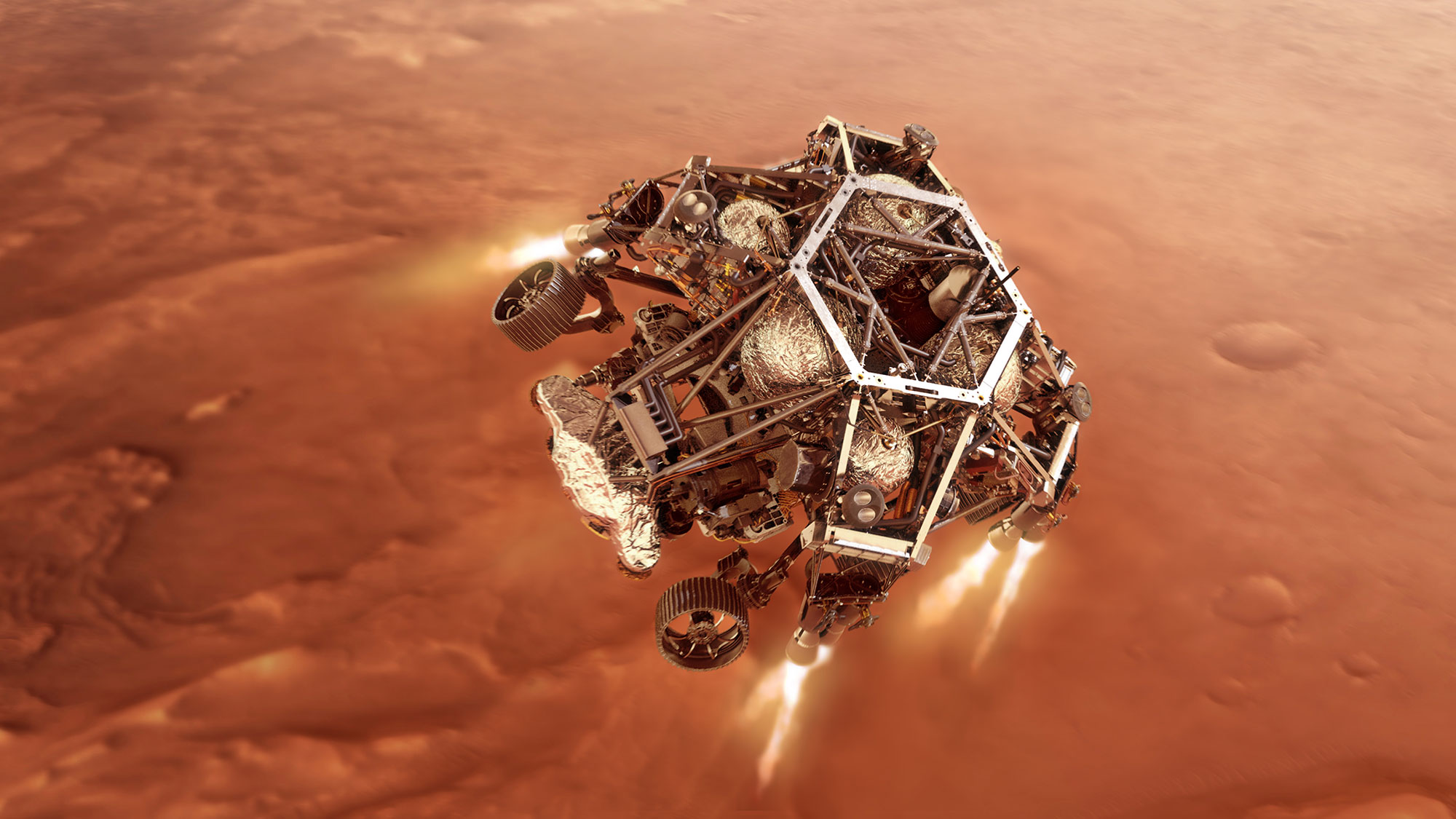
“Perseverance is NASA’s most ambitious Mars rover mission yet, focused scientifically on finding out whether there was ever any life on Mars in the past,” said Thomas Zurbuchen, associate administrator for the Science Mission Directorate at NASA Headquarters in Washington.
“To answer this question, the landing team will have its hands full getting us to Jezero Crater – the most challenging Martian terrain ever targeted for a landing.”
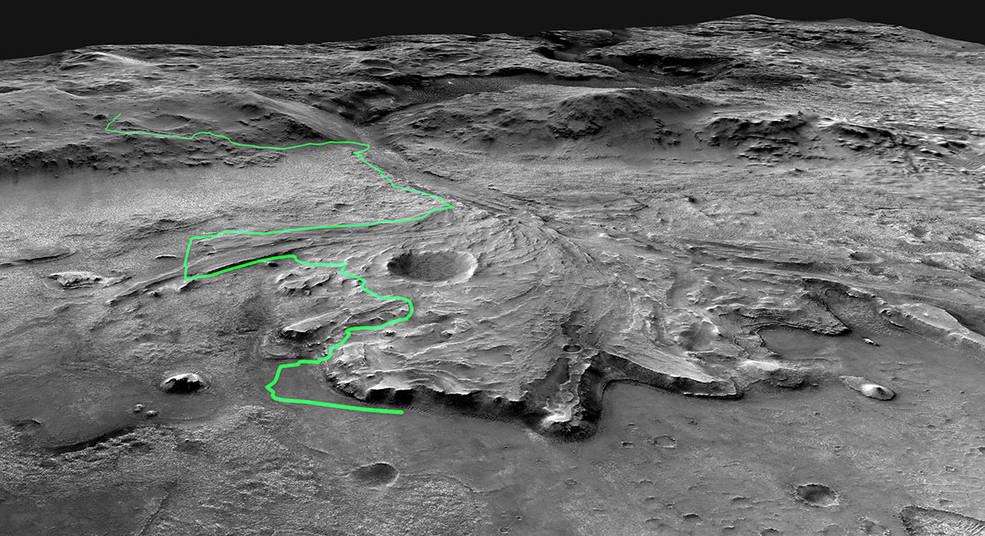
Scientists believe the area was once flooded with water and was home to an ancient river delta.
Billions of years ago, the now-bone-dry 28-mile-wide (45-kilometer-wide) basin was home to an actively-forming river delta and lake filled with water.
But for all its scientific bounty Jezero Crater is also the most challenging and dangerous place NASA has ever attempted to land a rover on the Red Planet.
Therefore it was only approved after engineers developed an new and enhanced navigation landing system using rapid fire imaging during the decent called Terrain Relative Navigation or TRN that involves hazard avoidance and can divert Perseverance to a safe landing spot in the final seconds if necessary.
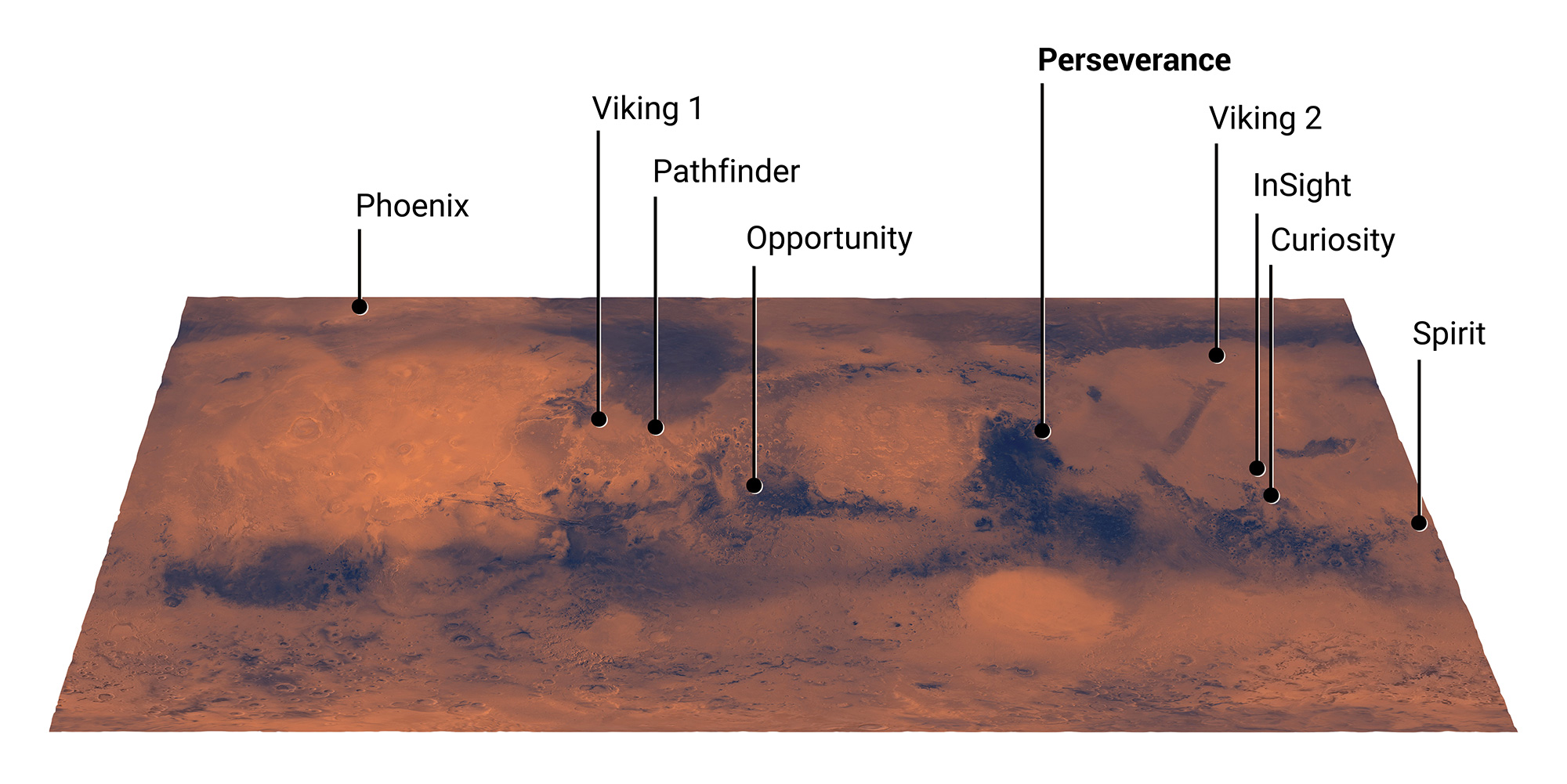
As a result of adding the TRN system and new Range Trigger technology the Perseverance landing ellipse is significantly shrunken compared to Curiosity which was much more oval shaped.
The Perseverance ellipse is more circular and measures just 4.8 mi x 4.1 mi (7.7 x 6.8 km) across.
“Before we can get that surface mission going, we have to land safely on Mars, and that is always a challenging feat for us,” said Matt Wallace, the rover’s deputy project manager at JPL, at the press conference Feb 17. “This is one of the most difficult maneuvers we do in the space business. Almost 50% of the spacecraft that have been sent to the surface of Mars failed. So we know we have our work cut out for us tomorrow to get down to the surface safely at Jezero Crater.”
“We’re going to ballistically approach the planet at about 12,000 miles an hour, and the trick we have to perform is to slow down to just a couple miles an hour so that we can gently touch the vehicle down on the surface.”
“That all has to happen in about seven minutes, and it all has to happen autonomously. Perseverance really has to fight her way down to the surface on her own. It’s something like a controlled disassembly of the spacecraft.”
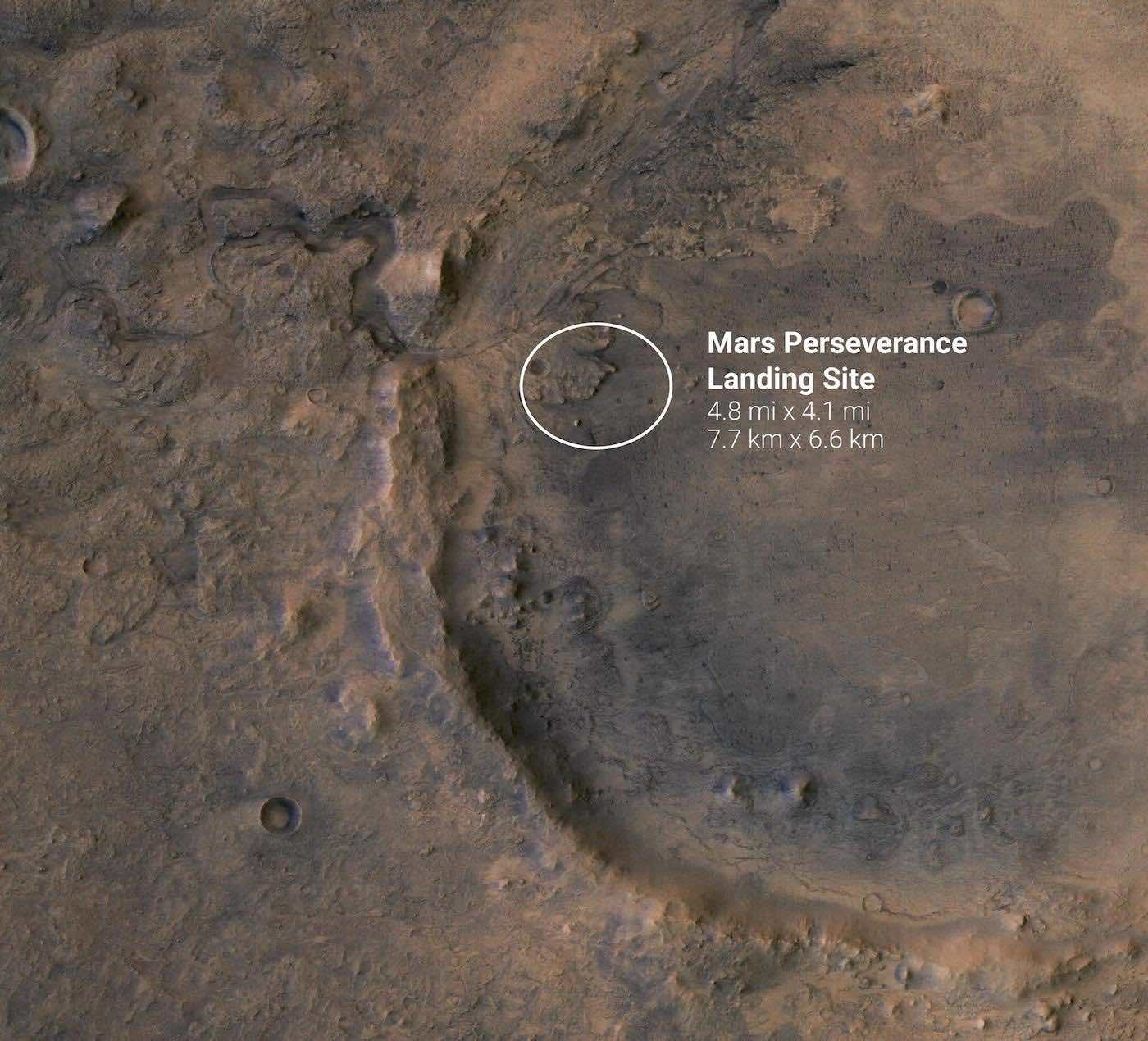
Furthermore Perseverance definitively starts the ‘Holy Grail’ goal of Mars Sample Return – sought after by scientists for decades to retrieve Red Planet soil samples and bring them back to Earth as soon as 2031 for the best possible analysis with the most sophisticated scientific instruments available to humankind – to help determine if life ever existed past or present on the Red Planet.
“Perseverance is our robotic astrobiologist, and it will be the first rover NASA has sent to Mars with the explicit goal of searching for signs of ancient life,” said Zurbuchen, at a media briefing Feb 16.
“It will build upon what we currently know from our previous rovers, orbiters and landers. And it will attempt to answer an age-old question that has eluded humanity for generations: whether life has ever existed elsewhere beyond our own planet, our Earth.”
Perseverance is the first leg in a multi-mission astrobiology joint venture with ESA (European Space Agency) to return the first pristine Martian surface samples back to Earth as soon as 2031.
Perseverance truly begins the decade long effort called Mars Sample Return and equipped with a Sample Caching System to collect rock and regolith (broken rock and dust) by drilling into the surface at Jezero and storing them inside 43 pristine sample collection tubes that will help answer fundamental questions about the existence of life beyond Earth.”
Three future missions currently in the planning stages by NASA in collaboration with ESA (European Space Agency) will work together to bring the samples back to Earth, where they will undergo in-depth analysis by scientists around the world using equipment far too large and complex to send to the Red Planet.
“Jezero is a basin where scientists believe an ancient river flowed into a lake and deposited sediments in a fan shape known as a delta. Scientists think the environment here was likely to have preserved signs of any life that gained a foothold billions of years ago – but Jezero also has steep cliffs, sand dunes, and boulder fields. Landing on Mars is difficult – only about 50% of all previous Mars landing attempts have succeeded – and these geological features make it even more so,” says the mission team
“The Perseverance team is building on lessons from previous touchdowns and employing new technologies that enable the spacecraft to target its landing site more accurately and avoid hazards autonomously.”
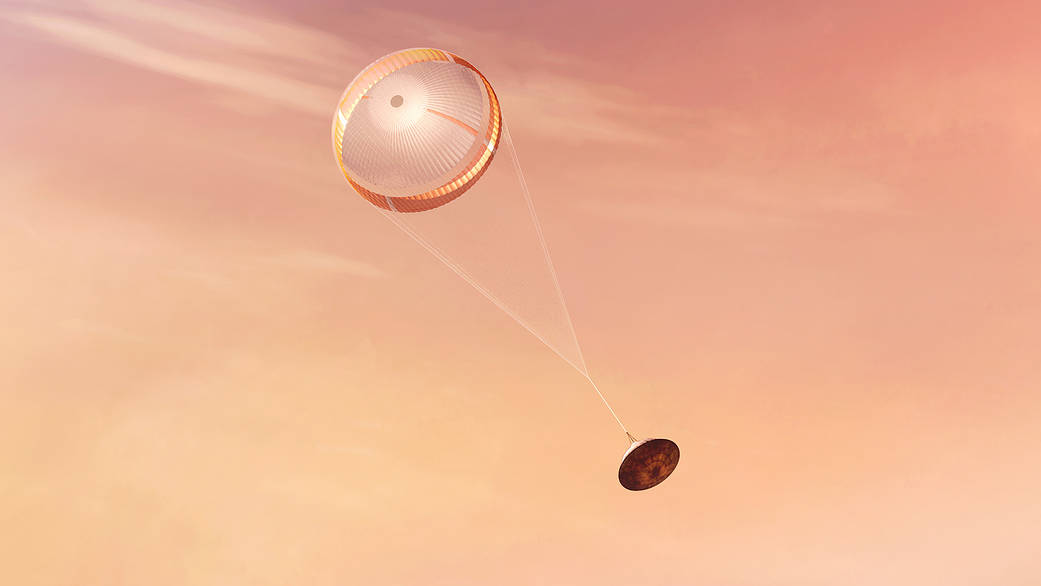
Watch the exciting mission trailer here:
Video Caption: Perseverance Arrives at Mars: Feb. 18, 2021 (Mission Trailer). After nearly 300 million miles (470 million km), NASA’s Perseverance rover completes its journey to Mars on Feb. 18, 2021. But, to reach the surface of the Red Planet, it has to survive the harrowing final phase known as Entry, Descent, and Landing. Credit: NASA/JPL-Caltech
Watch this video about EDL and the 7 Minutes of Terror:
Video Caption: All landings on Mars are difficult, but NASA’s Perseverance rover is attempting to touch down in the most challenging terrain on Mars ever targeted. The intense entry, descent, and landing phase, known as EDL, begins when the spacecraft reaches the top of the Martian atmosphere. Engineers have referred to the time it takes to land on Mars as the “seven minutes of terror.” The landing sequence is complex and targeting a location like Jezero Crater on Mars is only possible because of new landing technologies known as Range Trigger and Terrain-Relative Navigation. The Perseverance rover is set to land on the surface of Mars on February 18, 2021. Credit: NASA/JPL-Caltech
Here is the EDL sequence outlined by NASA:
– Cruise stage separation: The part of the spacecraft that has been flying Perseverance – with NASA’s Ingenuity Mars Helicopter attached to its belly – through space for the last six-and-a-half months will separate from the entry capsule at about 3:38 p.m. EST (12:38 p.m. PST).
– Atmospheric entry: The spacecraft is expected to hit the top of the Martian atmosphere traveling at about 12,100 mph (19,500 kph) at 3:48 p.m. EST (12:48 p.m. PST).
– Peak heating: Friction from the atmosphere will heat up the bottom of the spacecraft to temperatures as high as about 2,370 degrees Fahrenheit (about 1,300 degrees Celsius) at 3:49 p.m. EST (12:49 p.m. PST).
– Parachute deployment: The spacecraft will deploy its parachute at supersonic speed at around 3:52 p.m. EST (12:52 p.m. PST). The exact deployment time is based on the new Range Trigger technology, which improves the precision of the spacecraft’s ability to hit a landing target.
– Heat shield separation: The protective bottom of the entry capsule will detach about 20 seconds after the parachute deployment. This allows the rover to use a radar to determine how far it is from the ground and employ its Terrain-Relative Navigation technology to find a safe landing site.
– Back shell separation: The back half of the entry capsule that is fastened to the parachute will separate from the rover and its “jetpack” (known as the descent stage) at 3:54 p.m. EST (12:54 p.m. PST). The jetpack will use retrorockets to slow down and fly to the landing site.
– Touchdown: The spacecraft’s descent stage, using the sky crane maneuver, will lower the rover down to the surface on nylon tethers. The rover is expected to touch down on the surface of Mars at human walking speed (about 1.7 mph, or 2.7 kph) at around 3:55 p.m. EST (12:55 p.m. PST).
A variety of factors can affect the precise timing of the milestones listed above, including properties of the Martian atmosphere that are hard to predict until the spacecraft actually flies through.

The Perseverance Mars 2020 mission will search for signs of past microbial life, characterize Mars’ climate and geology, collect samples for future return to Earth, and pave the way for human exploration of the Red Planet.
Also aboard is Ingenuity, a twin-rotor, solar-powered helicopter attached to the belly of the rover, will become the first aircraft to fly on another world.
The 1 ton rover will spend at least one Mars year (two Earth years) exploring the landing site region.
Perseverance is a robotic scientist weighing about 2,260 pounds (1,025 kilograms) and includes a robotic arm with a 99-pound (45-kilogram) turret at the end.
The rover is equipped with six advanced aluminum wheels on a rocker-bogie system.
The SUV sized rover dimensions are 10 feet (3 m) long, 9 feet (2.7 m) wide and 7 feet (2.2 m) tall with a 7 feet (2.1 meters) long robotic arm.
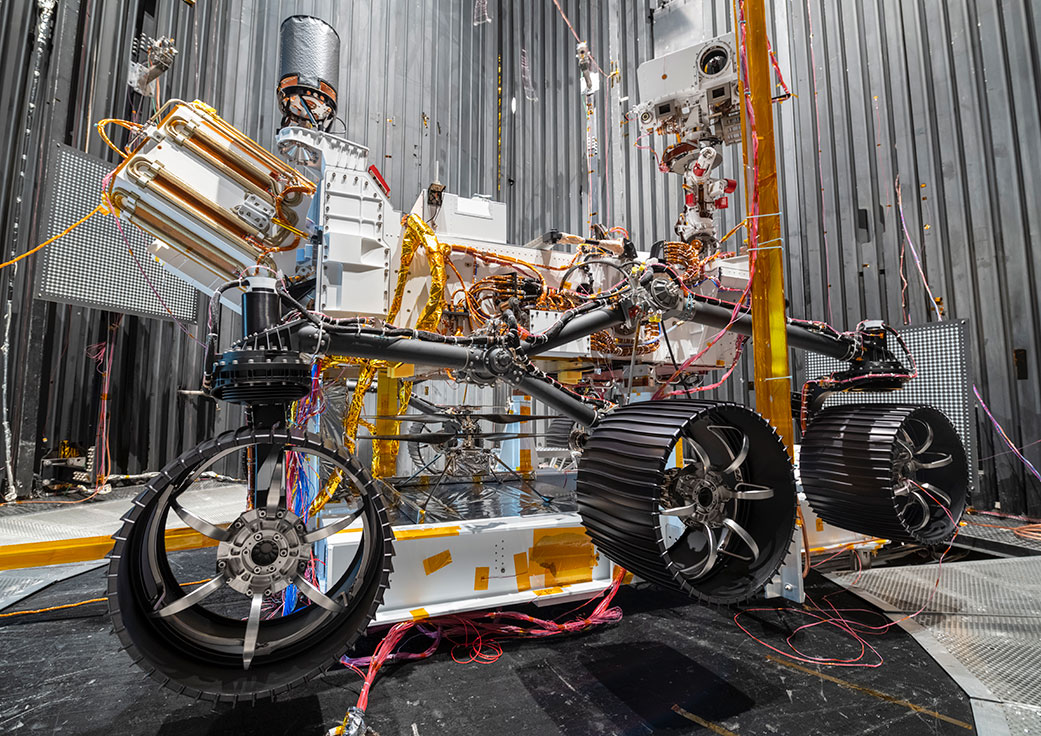
The rover is equipped with seven different scientific instruments and the mission includes 25 cameras – the most ever to Mars and deep space. The rover itself is equipped with 19 cameras.
The science payload has a mass of 130 pounds (59 kilograms) for seven instruments: Mastcam-Z, Mars Environmental Dynamics Analyzer (MEDA), Mars Oxygen In-Situ Resource Utilization Experiment (MOXIE), Planetary Instrument for X-ray Lithochemistry (PIXL), Radar Imager for Mars’ Subsurface Experiment (RIMFAX), Scanning Habitable Environments with Raman & Luminescence for Organics & Chemicals (SHERLOC) and SuperCam.
You can follow the Mars 2020 mission flight path here:
https://eyes.nasa.gov/apps/orrery/#/sc_perseverance
The solar powered Ingenuity helicopter is a technology demonstration experiment aimed at attempting the first flight on Mars.
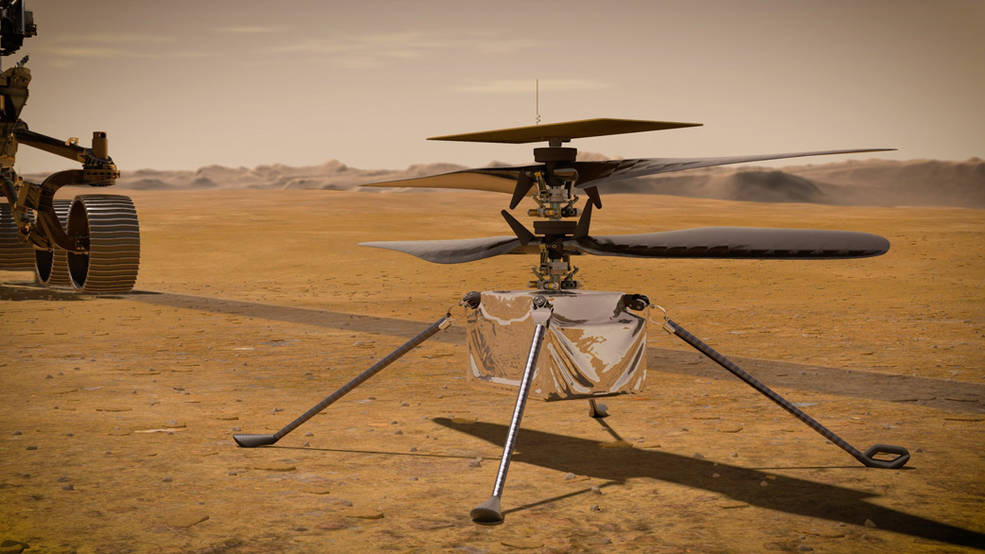
It is stowed on the belly and receives its charge from the rover’s power supply.
The four legged Ingenuity has a mass of about 4.0 pounds (1.8 kilograms) and stands 1.6 feet or 19 inches (0.49 meters) high. It is equipped with two counter rotating blades for lift spinning at about 2,400 rpm and two cameras.
After Ingenuity is deployed on Mars’ surface its batteries will be charged solely by the helicopter’s own solar panel. If Ingenuity survives the cold Martian nights during its preflight checkout, the team will proceed with testing.
Under clear blue sunshine drenched skies the car-sized Perseverance Mars 2020 rover lifted off right on time at 7:50 a.m. EDT (1150 GMT) 30 July 2020 aboard a 19 story tall ULA Atlas V 541 rocket from Space Launch Complex 41 on Cape Canaveral Air Force Station, Florida.
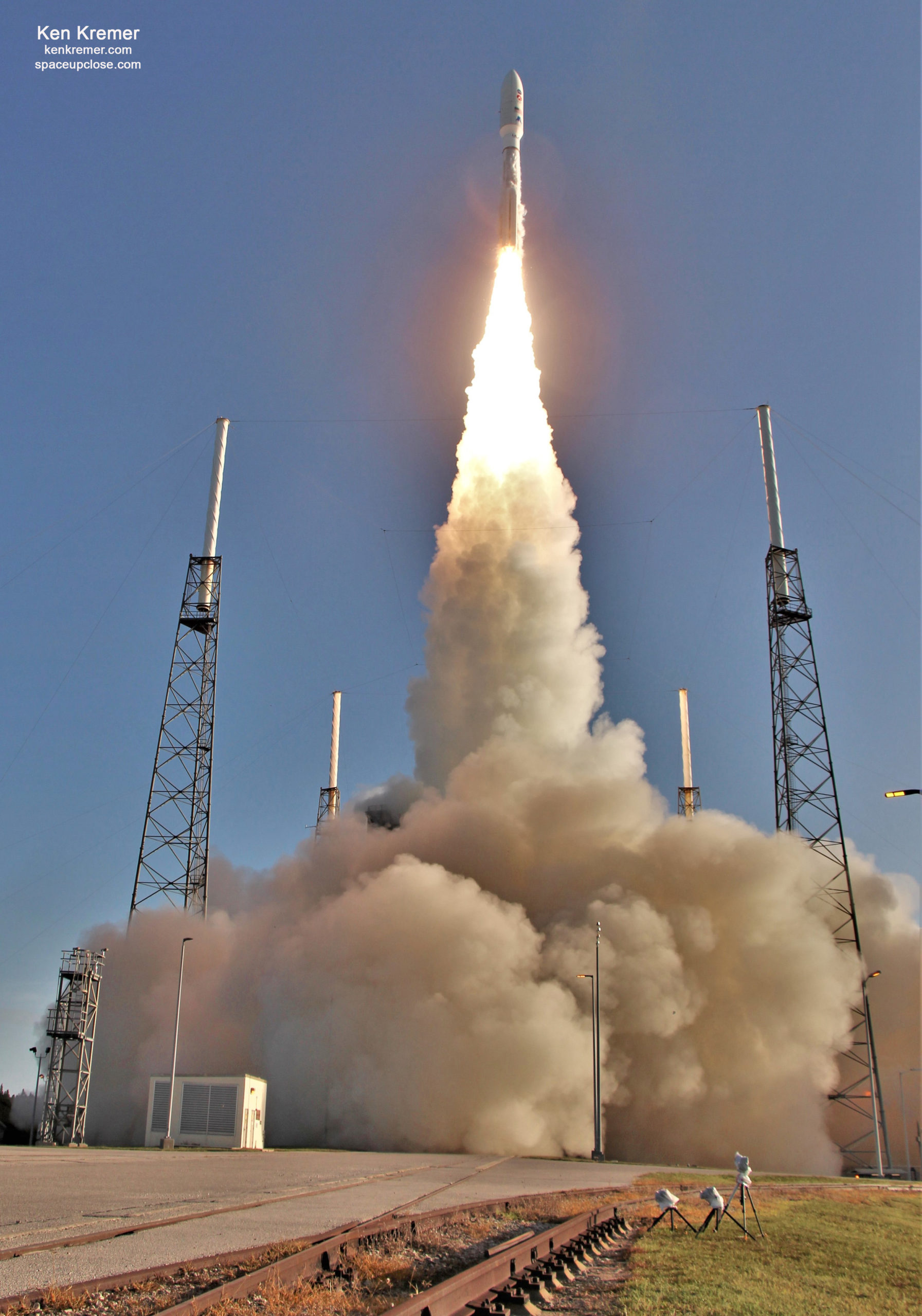
Check out our launch story and launch and prelaunch photos from pad 41
Learn more about Mars 2020 here:
Download our Free “Mars 2020 Exploration Mission Guide” created by RocketSTEM magazine and Space UpClose:
https://www.rocketstem.org/2020/07/20/mars-2020-mission-overview/
Link on Space UpClose Home Page upper right below Social Media links
My 12-page ‘Mars 2020 Perseverance Rover Mission Overview’:
https://www.rocketstem.org/2020/07/20/mars-2020-mission-overview/
Meanwhile her older twin sister river Curiosity recently celebrated 3000 Sols of exploring Mars.
See my Sol 3000 mosaic and story here:
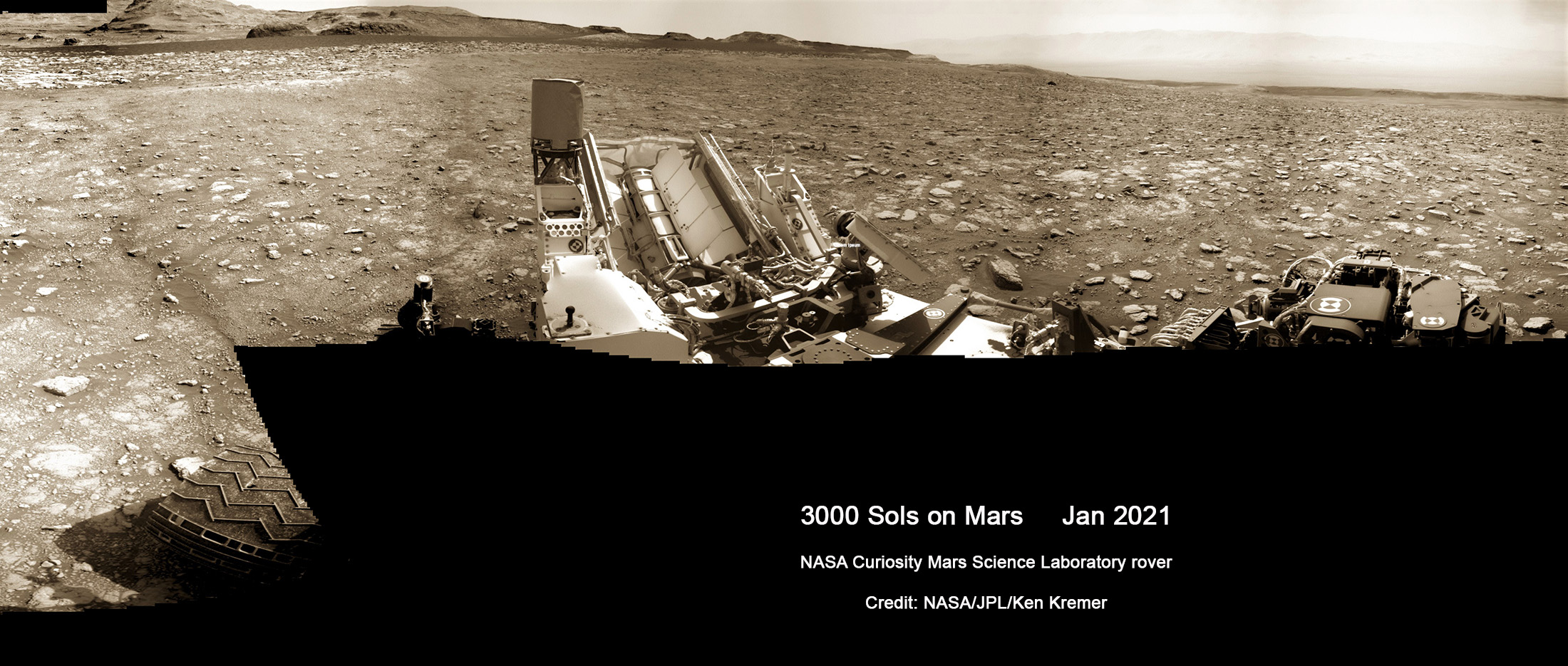
Watch our live and complete ‘Stay Curious’ Dec 14 and Dec. 30 , 2020 and Feb 12, 2021 show on many space topics including Mars Perseverance, Artemis and human spaceflight.
https://www.facebook.com/175507880819/videos/226784775573274
https://www.facebook.com/175507880819/videos/775199953071117
https://www.facebook.com/175507880819/videos/3246699658764085
Watch Ken’s continuing reports about Mars 2020 Perseverance and Curiosity rovers, Artemis and NASA missions, SpaceX, Starlink, Commercial Crew and Starliner and Crew Dragon and onsite for live reporting of upcoming and recent SpaceX and ULA launches including Crew 1 & 2, Demo-2, ISS, X-37B, Solar Orbiter, NRO spysats and national security missions and more at the Kennedy Space Center and Cape Canaveral Space Force Station.
Stay tuned here for Ken’s continuing Earth and Planetary science and human spaceflight news: www.kenkremer.com –www.spaceupclose.com – twitter @ken_kremer – email: ken at kenkremer.com
Dr. Kremer is a research scientist and journalist based in the KSC area, active in outreach and interviewed regularly on TV and radio about space topics.
………….
Ken’s photos are for sale and he is available for lectures and outreach events
Ken has created hundreds of widely published Mars rover mosaics and lectures also about NASA’s Mars rovers
Please consider supporting Ken’s work by donating at Patreon:
https://www.patreon.com/kenkremer
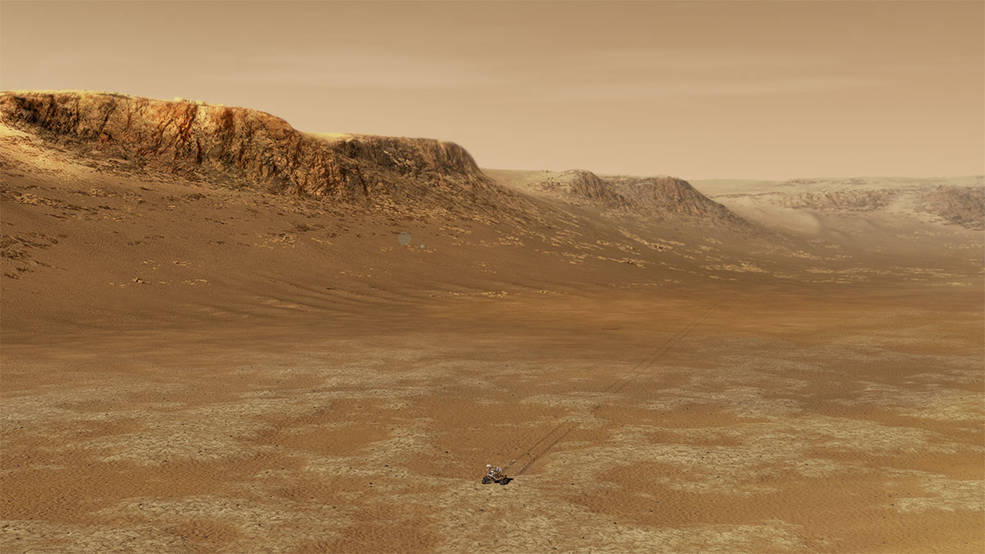
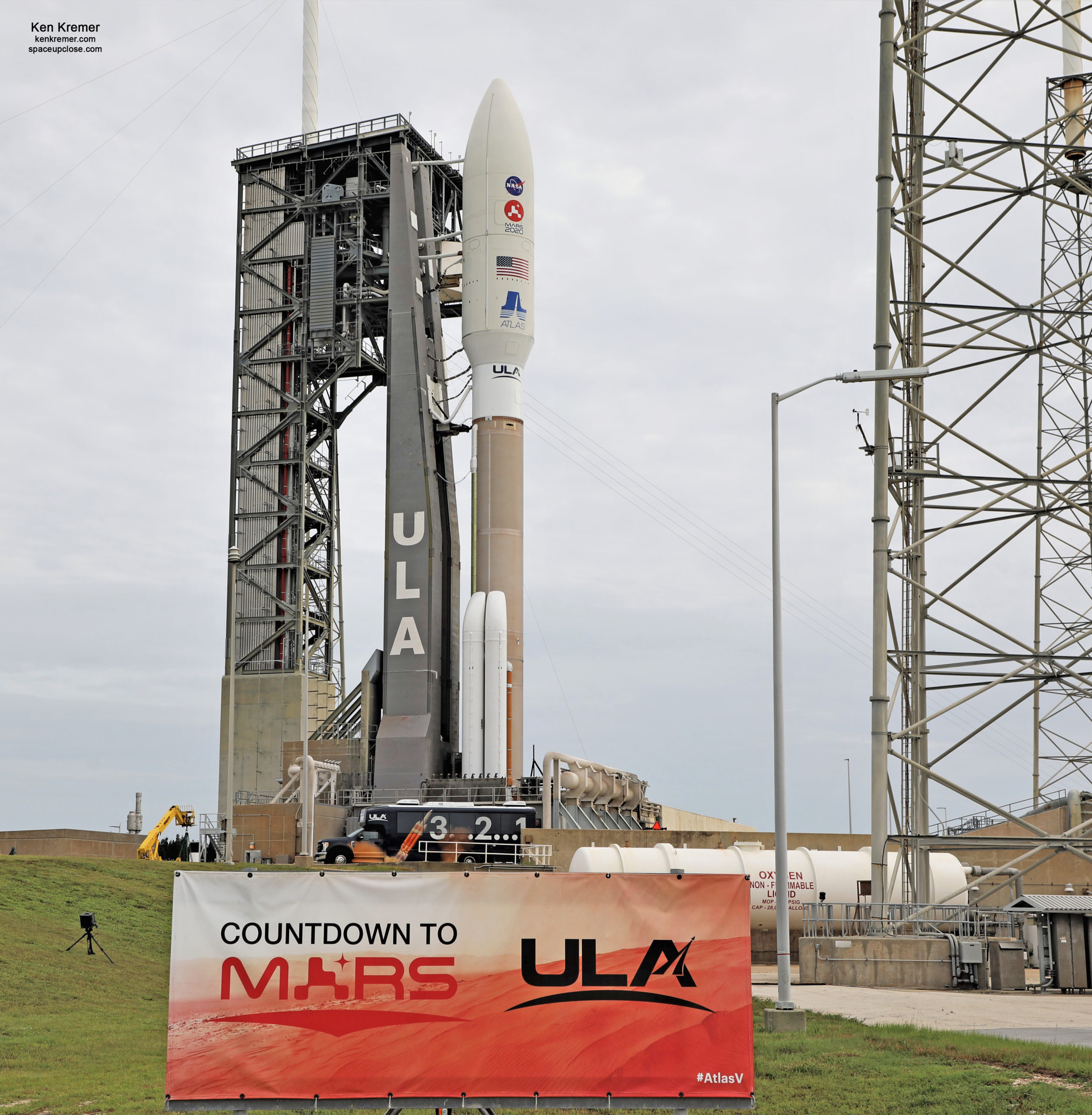
x



